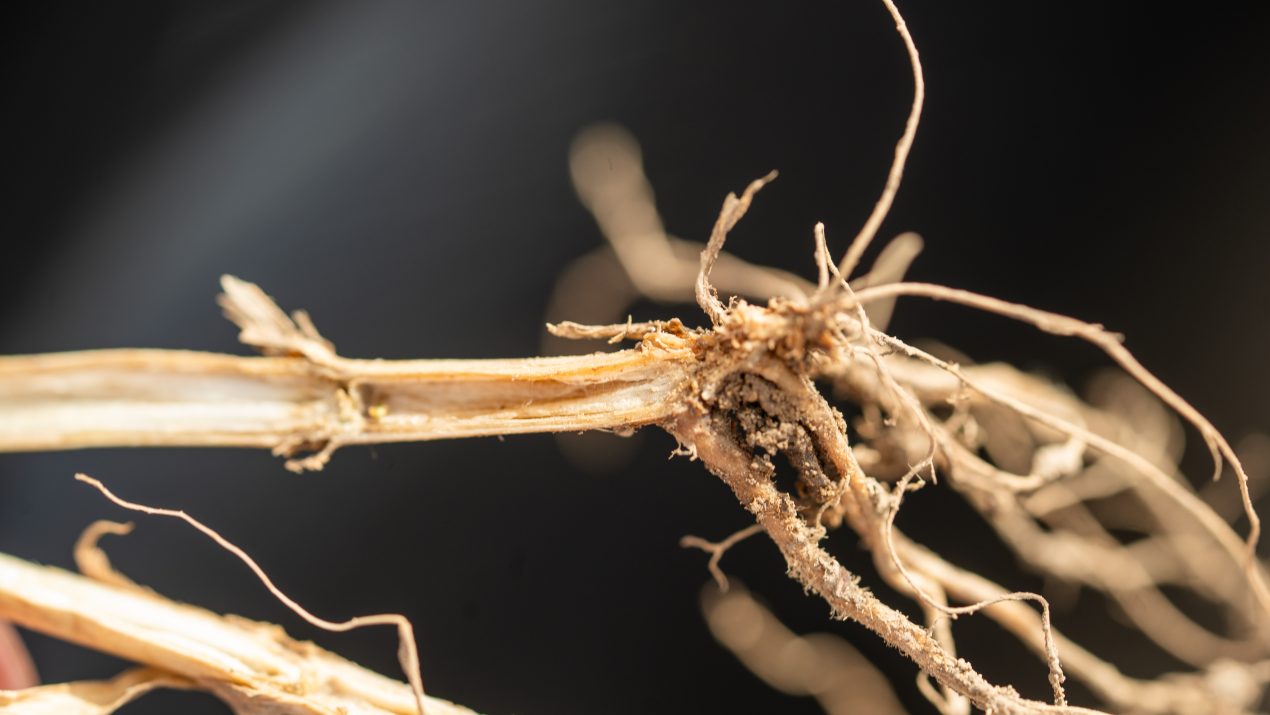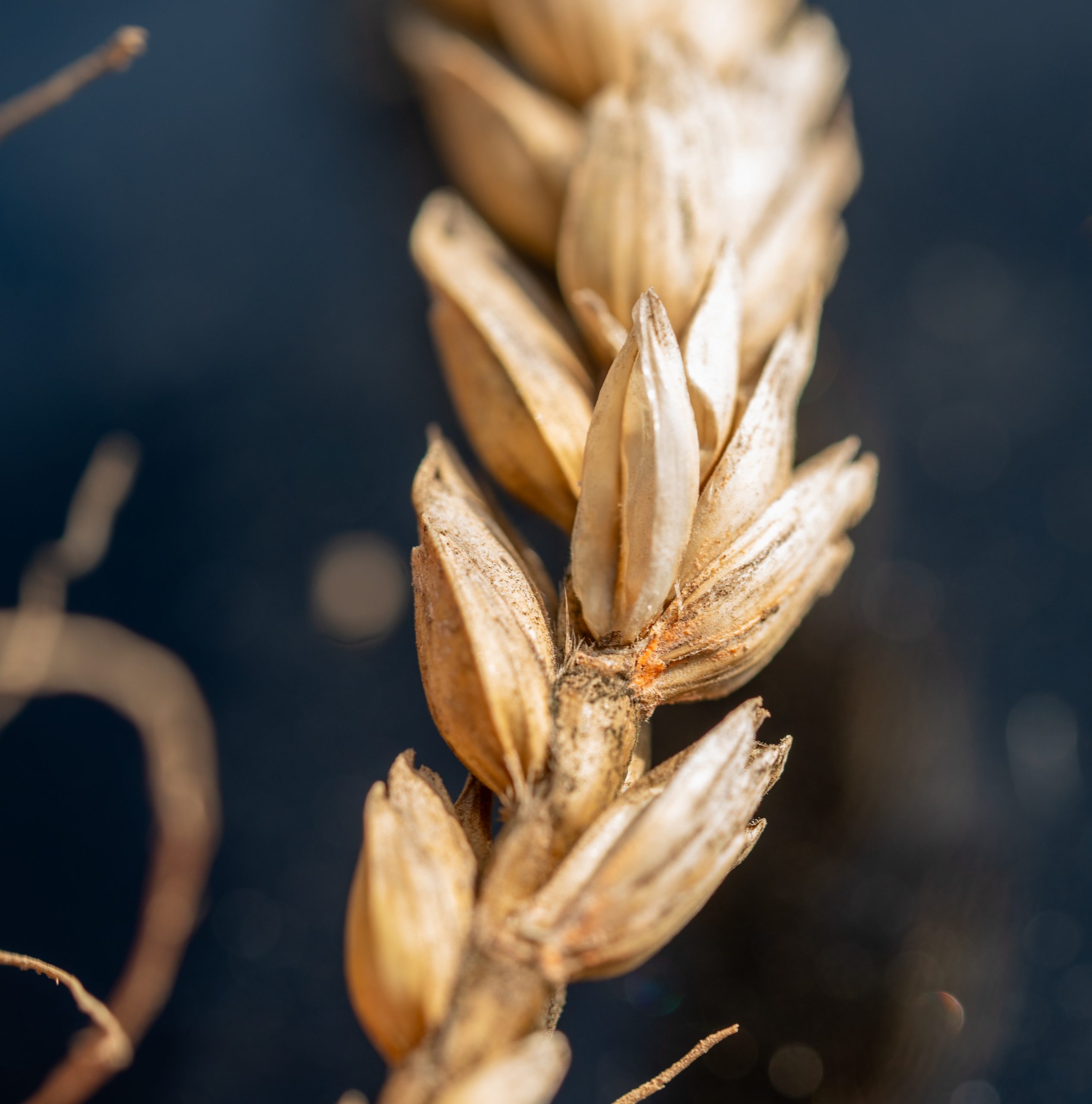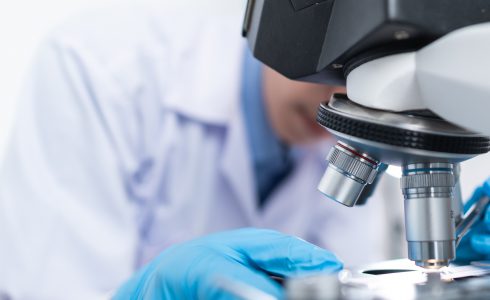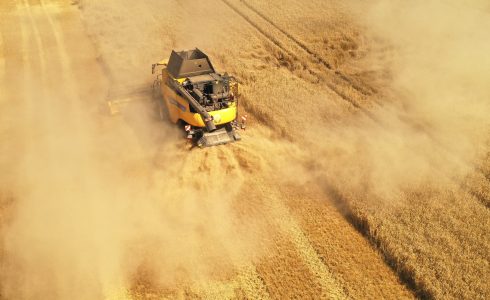Some farmers say: “I remove the straw, so I don’t need biology.” At first glance, this sounds logical, but the reality is very different. Even when straw is taken away, large amounts of residues remain in the field – stubble and roots. From an 8 t/ha wheat harvest, about 6.4 t/ha of root mass stays in the soil. Straw is only the visible part of the residues, but most of the organic matter is left below ground, where crucial biological processes take place and where pathogens often survive.
This year in Lithuania the situation has been particularly challenging. Heavy and prolonged rains created perfect conditions for root rot pathogens to thrive. Wheat roots were found to be heavily infected, and just one gram of root residues can contain between 10,000 and 10,000,000 fusarium spores. In addition, infected grains, ear fragments, and chaff falling back into the soil further increase the infection pressure. Such conditions mean that even if straw is removed, the soil remains a reservoir of pathogens that can easily affect the next crop.
For this reason, straw decomposition is only one of the arguments for using biological products. The main goal is to reduce pathogen populations in the soil and protect the following crop from infection. If soil biological activity was naturally very high, if aeration was ideal and no pathogens were present, then such interventions might not be necessary. But under today’s conditions, with heavy rainfall, high residue loads and significant pathogen pressure, biological solutions become essential.

Ruinex is one such solution. It is a microbiological product designed not only to accelerate straw decomposition but also to break down roots and stubble, degrade pathogen spores and stimulate beneficial microbial activity. By doing so, it reduces infection pressure, improves soil health and ensures a safer start for the next crop. Farmers using Ruinex can expect residues to decompose faster, nutrients to return to the soil more efficiently, and the risk of soil-borne diseases to be minimized.
In conclusion, removing straw from the field does not mean that the problem is solved. Roots, stubble and infected plant residues remain in the soil, acting as a hidden source of disease. That is why the use of biological products such as Ruinex is no longer just an option – it is a necessity for protecting soil health and safeguarding yield potential for the future.




